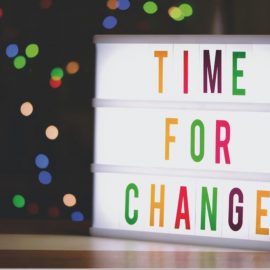
Are you curious about how COVID-19 has reshaped our world? What lasting changes will we see in the economy?
In COVID-19, authors Klaus Schwab and Thierry Malleret explore the pandemic’s far-reaching impacts. They examine the economic impact of COVID-19, industry transformations, and the acceleration of digital technologies. The book covers how these changes are affecting our daily lives and future prospects.
Keep reading to uncover the key insights from this thought-provoking analysis.
The Economic Impact of COVID-19
The pandemic has triggered a significant contraction in the world’s economic activity, leading to unprecedented levels of unemployment, widespread business closures, and a rise in financial inequality. The economic impact of COVID-19 has caused an abrupt halt to global economic operations, resulting in a substantial increase in joblessness and a noticeable drop in countries’ GDPs. The longer lockdowns remain in place, the more intense their detrimental effects become, potentially causing lasting and irreversible damage to the economic framework. As unemployment rises, businesses close, and capital investments freeze, we’re likely to see increased social unrest and a push for a more sustainable and fair recovery.
1. Changes in Industries & Consumer Behavior
The enforcement of movement restrictions and physical distancing requirements have significantly transformed industries like tourism, hospitality, and retail, as well as our social interactions and consumer habits. Businesses that rely on in-person interactions have been forced to make expensive changes to their service delivery methods. These modifications include expanding the distance between customers, enhancing cleaning routines, and revising work procedures to account for the lasting changes expected to persist even after the pandemic ends.
2. Acceleration of Digital Transformation
The pandemic has accelerated the transition to digitalization, necessitating a rapid adoption of remote work, online services, and greater automation. The need for isolation has hastened the uptake of digital technologies in numerous industries, with executives noting a significant increase in digital interactions that they expect to have lasting impacts. Innovations in automation and biotechnology are being fast-tracked, and remote work has increased, revealing disparities in job vulnerabilities.
The integration of automated systems in the workplace is being sped up by the pandemic, prompting businesses to rely more on machinery and artificial intelligence to minimize human contact and decrease health-related risks. We’re seeing an increasing dependence on autonomous delivery systems and software designed to automate regular tasks, which is a clear indication of rapid technological advancements that are displacing jobs previously held by individuals.
Looking Ahead
The health crisis has compelled a thorough reassessment of global governance structures and a collective shift towards recovery plans that prioritize sustainability and fairness as we move beyond the emergency. As we navigate these changes, it’s clear that the pandemic’s effects will continue to shape our economic landscape for years to come.






